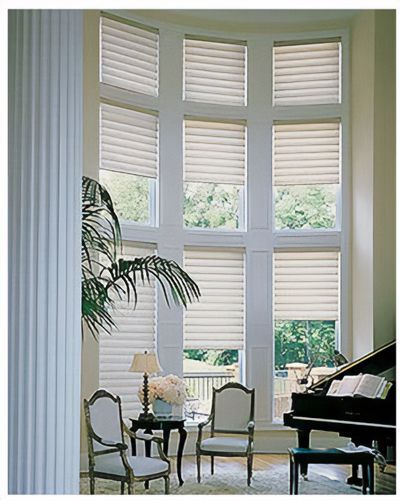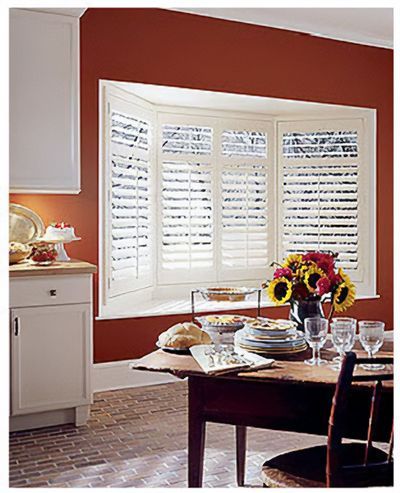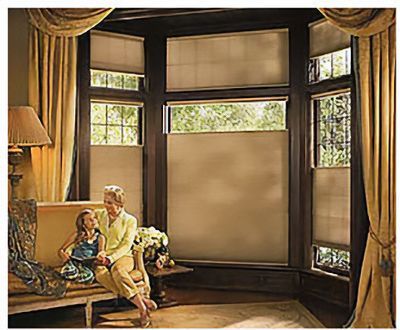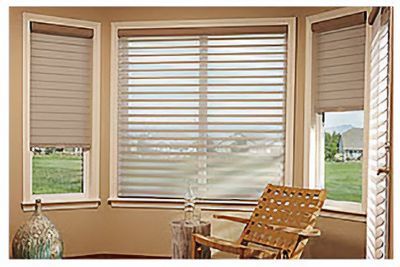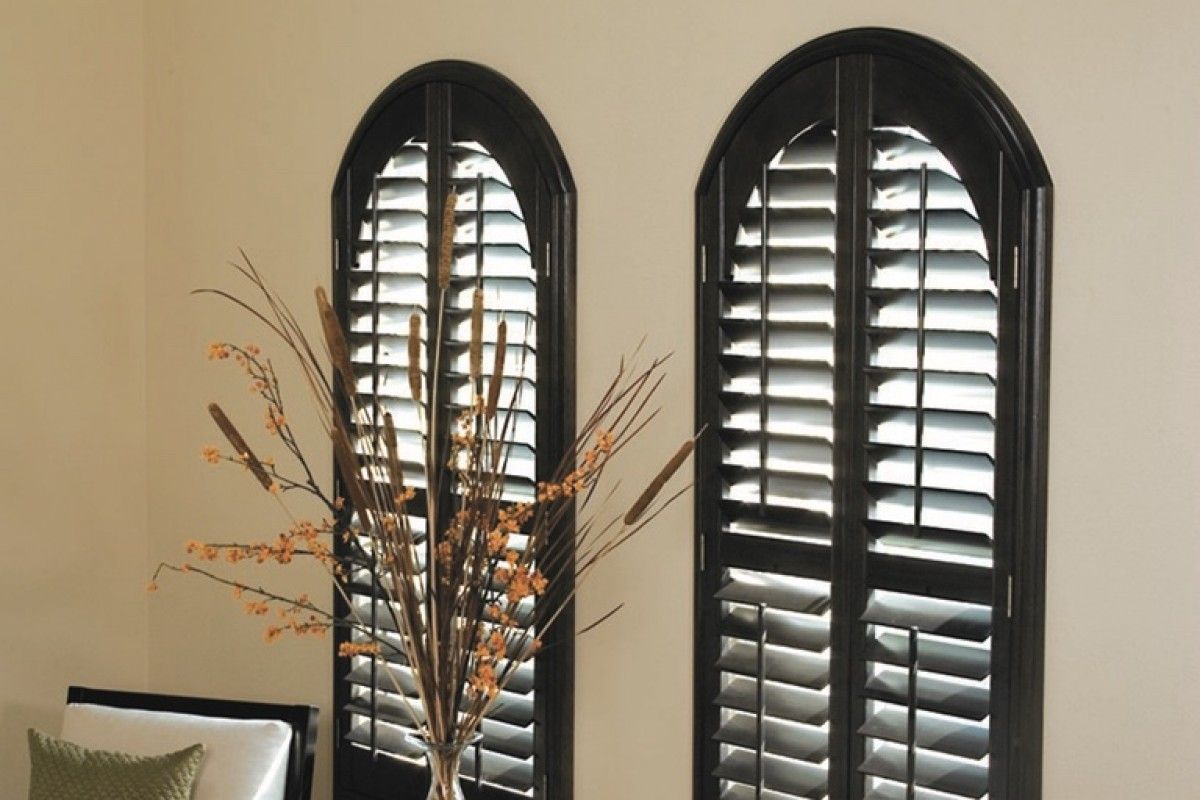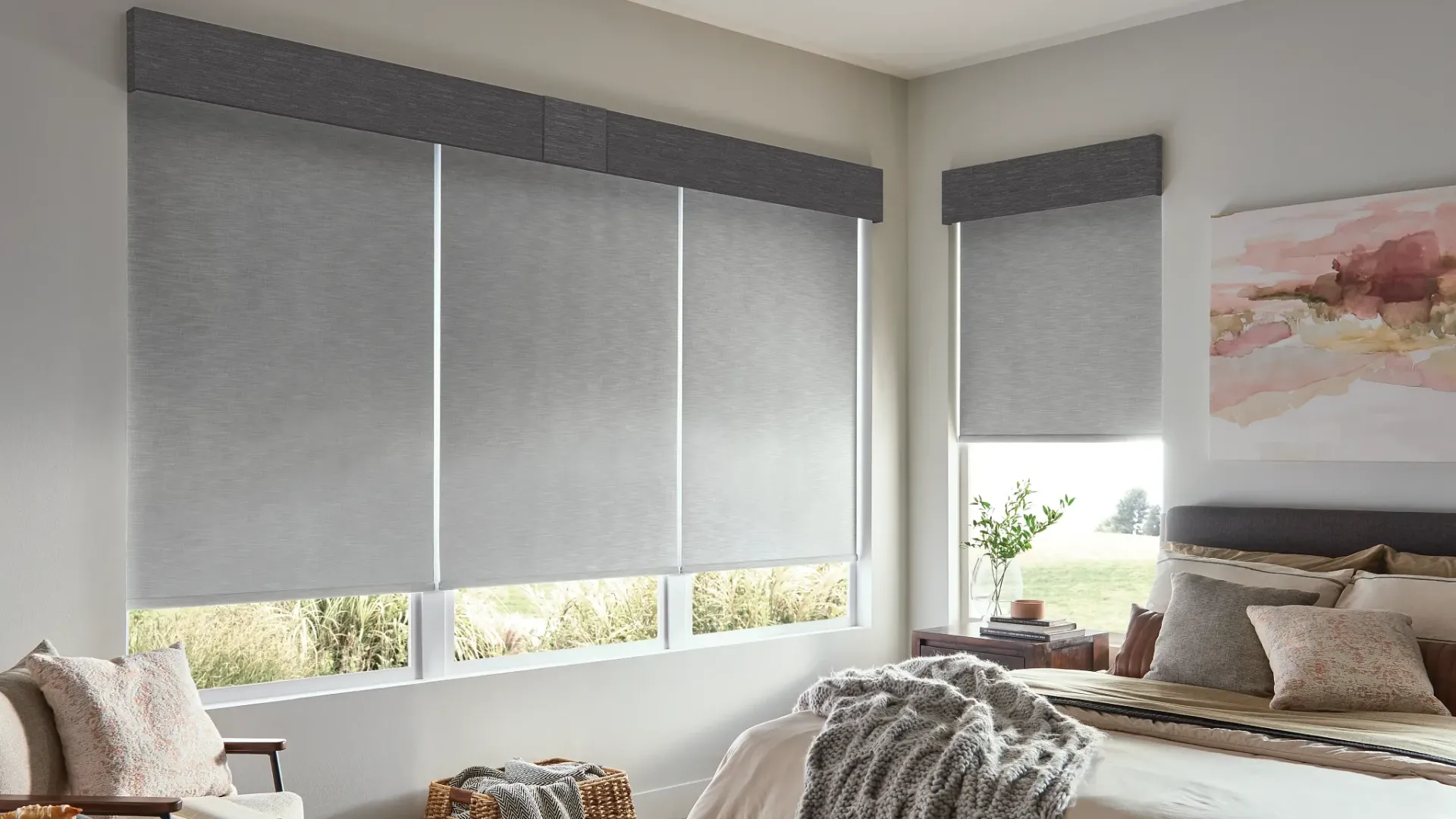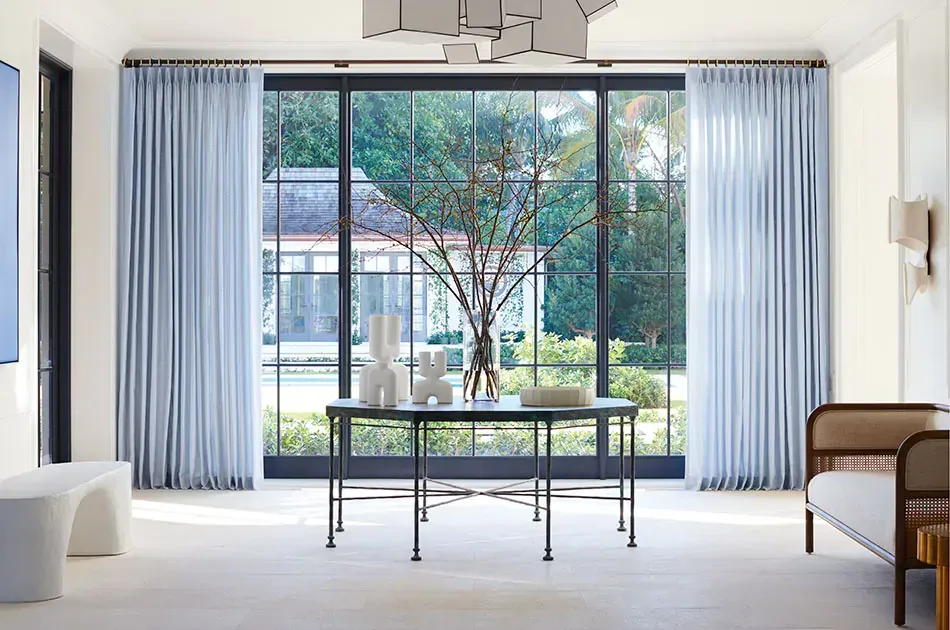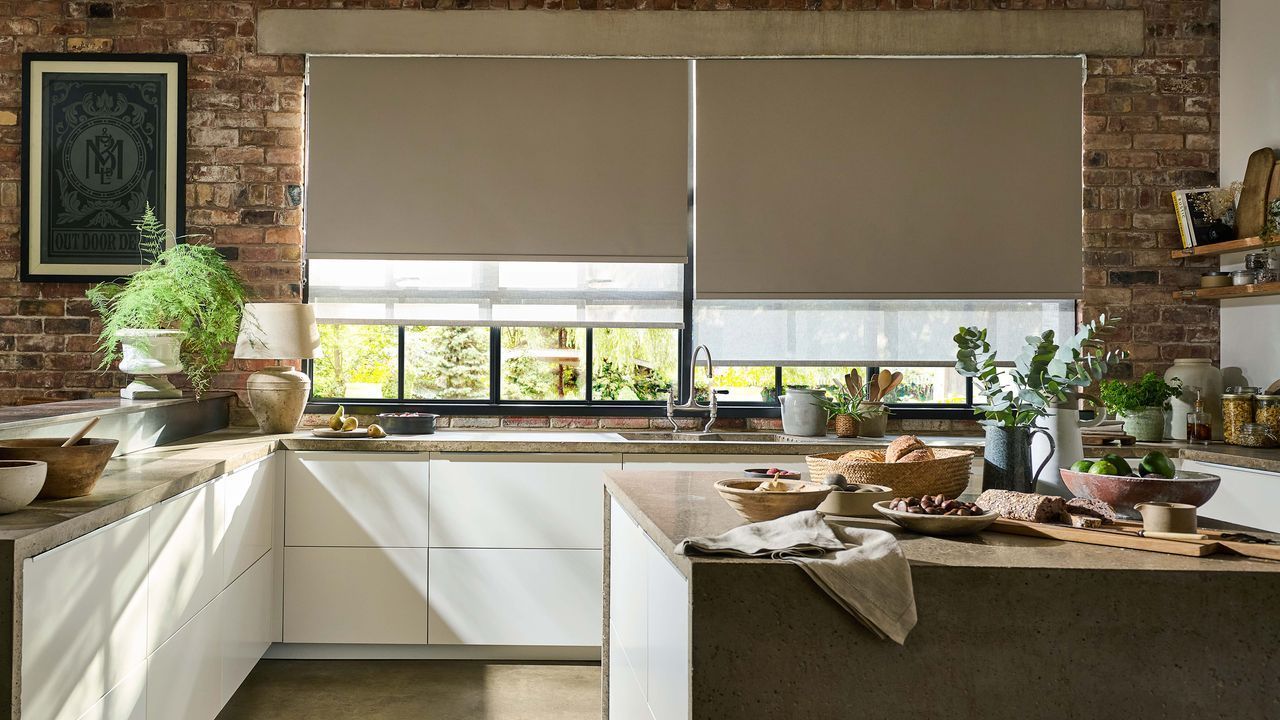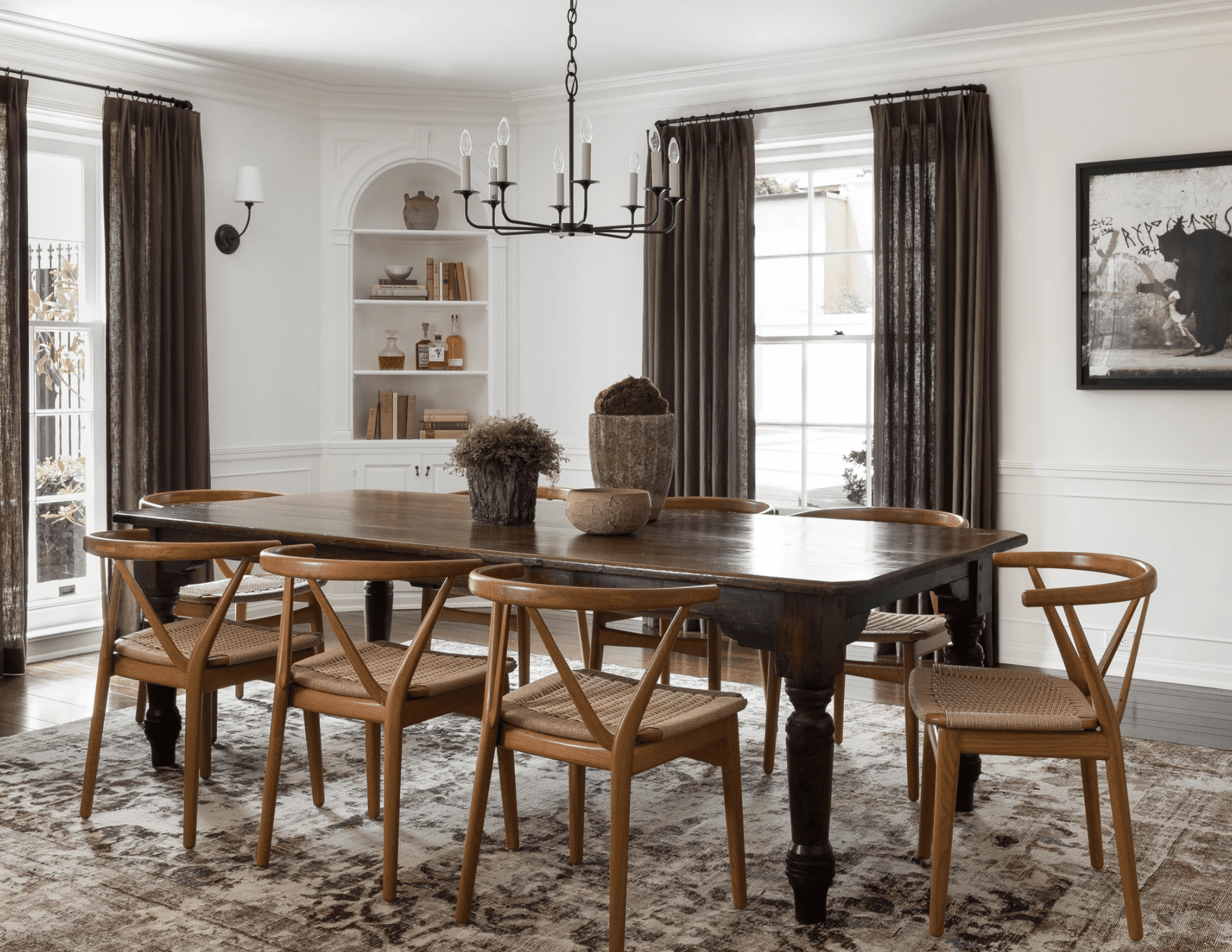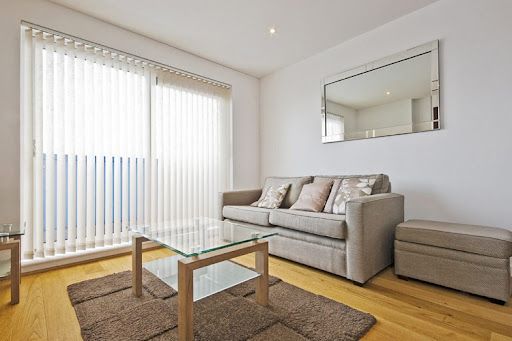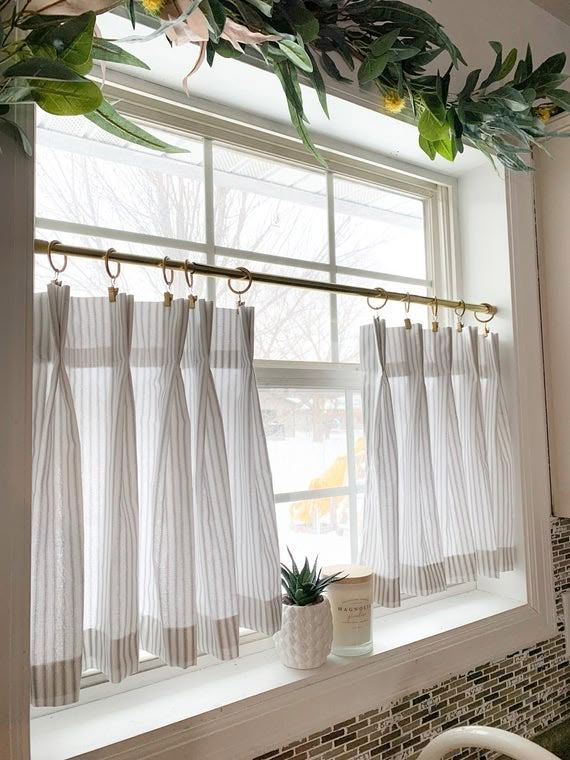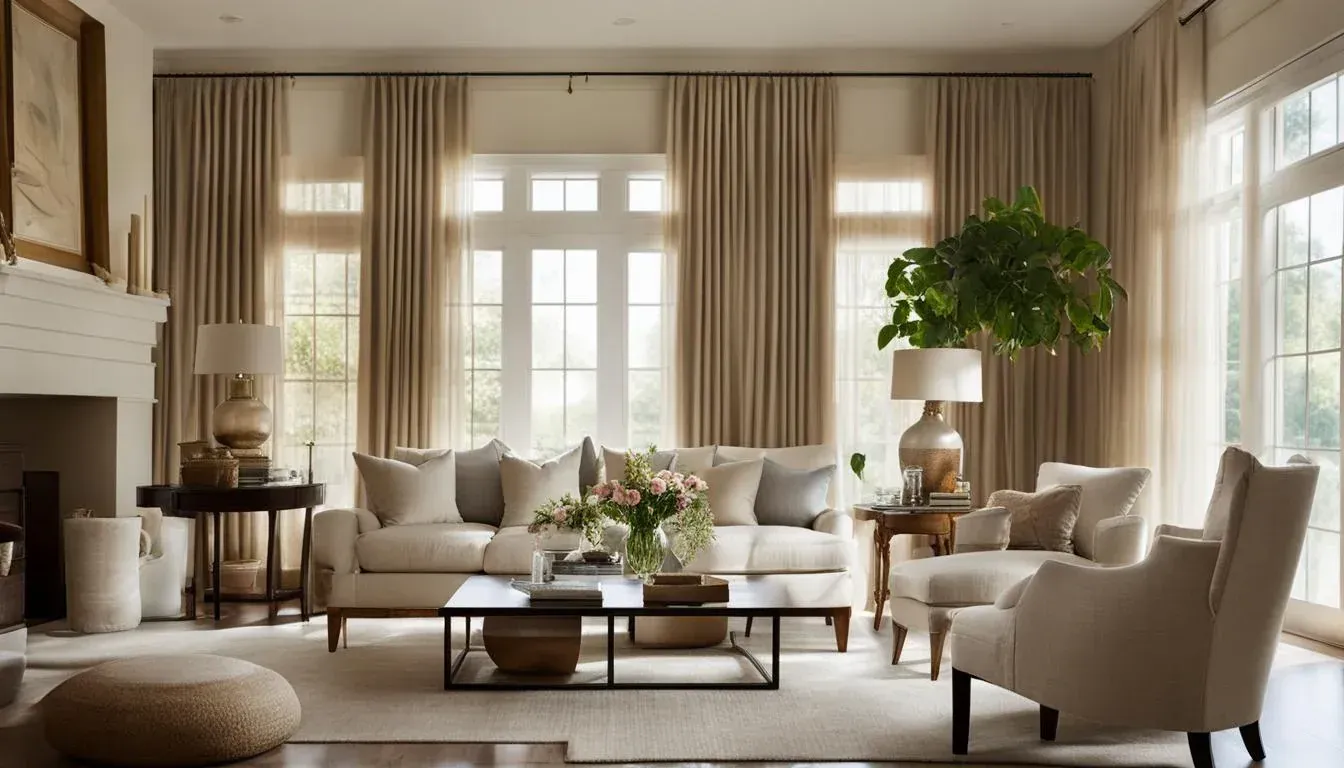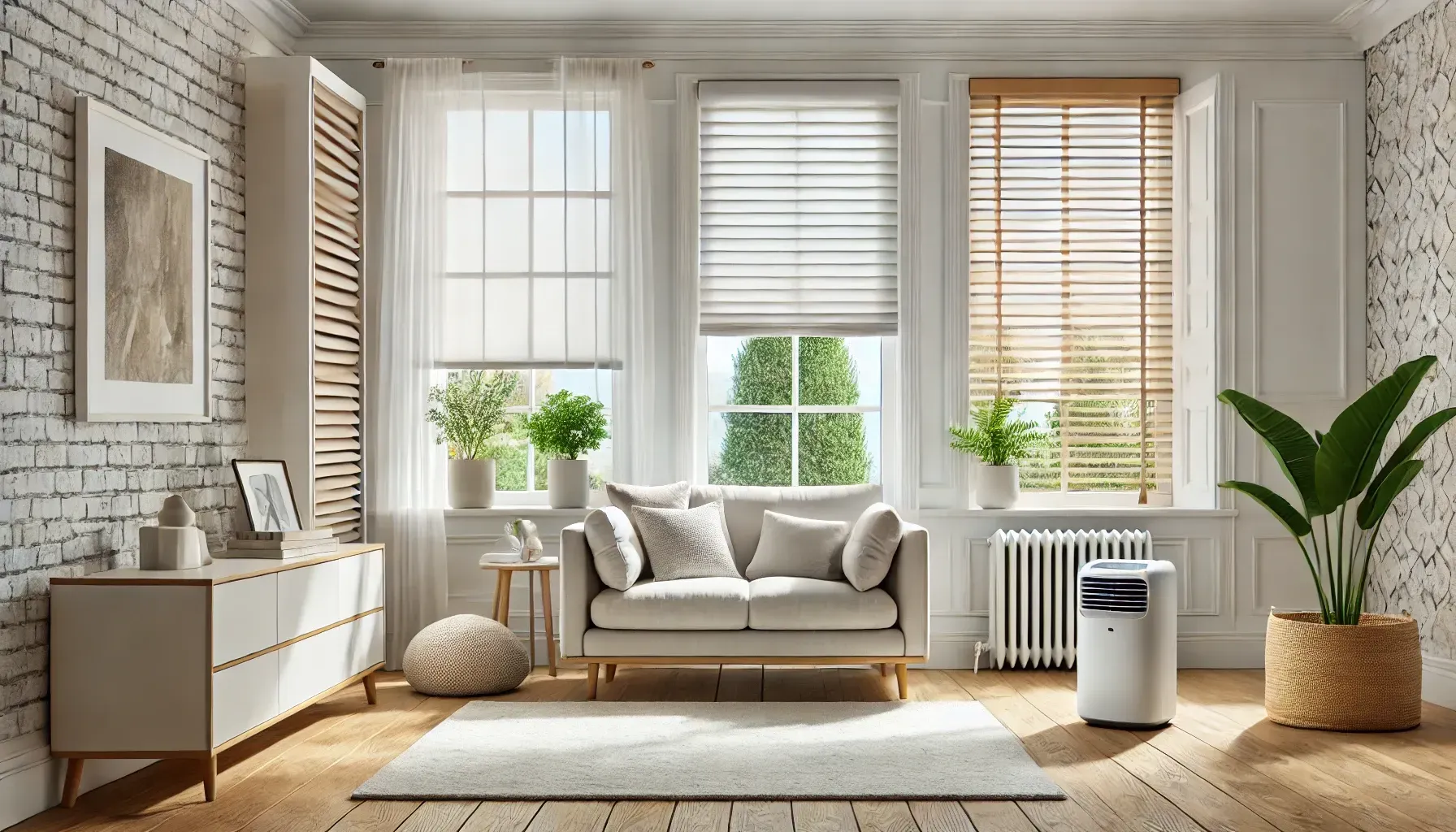1. Dress each window separately. You may have one bay window, but dressing each piece separately will really highlight the architectural design of your window. It will also give you some flexibility. You may have harsh sunlight coming into one portion of the bay at a certain time of day. You can close just that window treatment and still enjoy the natural, less direct light coming in the other panels.
2. Less is more. If your bay features decorative window moldings, you don't want to overshadow these with bulky window coverings. Traditional shades, tear drop Roman shades, Roman screen shades, or woven wood shades are great options. Shades will provide the privacy you need, but are almost unnoticeable when raised, allowing your bay window to show off its built-in architecture. You can choose from an assortment of fabrics, from exotic woven wood shades to luxurious soft sheers.
Blinds will also provide the same seamless coverage. Faux wood blinds, or real hardwood or bass wood blinds can be matched to compliment the existing molding. Just because you go with minimal covering, though, doesn't mean you are losing out on energy-efficient options. Window treatments by Hunter Douglas offer numerous energy-efficient options that will help keep both your heating and cooling costs down.
3. Mount inside the molding. Unlike windows in unison, bay window treatments are not designed to touch each other at the edges. Whether you are using blinds, shades or even shutters, they should be mounted inside the window molding.

